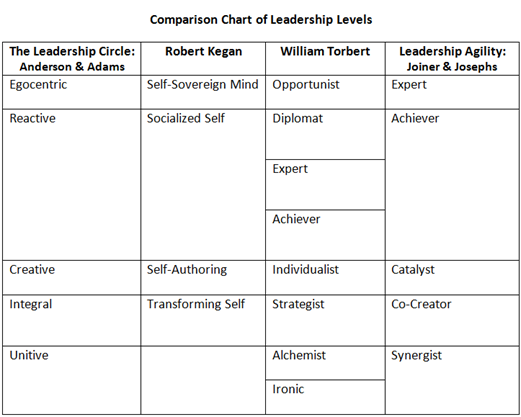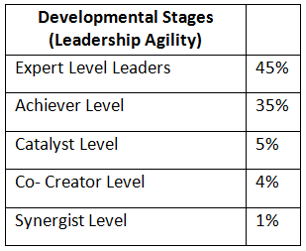By John Murashige
Partner, P4 Advisors
“If we can just get them to understand what needs to be done, we’ll get the results we want.”
An organization falls short on delivery of their results. Leadership has determined that a culture change is required to better results. A culture that causes our organization to focus on delivery of our key results will lead to success is the thought. “Let’s get someone to help us with this work.” And so the journey goes.
This pattern often repeats itself every 3-5 years. Why are we caught in this spiral? Maybe we didn’t bring in the right consultant? Maybe this time we’ll get it right? Maybe we didn’t identify what really needed to be changed?
To change the culture of an organization, we must first know what its culture really is. An organization’s culture is a derived directly from its systems, processes, practices, totems, and taboos. Without addressing those factors, an organization’s culture will never change.
“You can bring in the best experts that help organizations lead culture change, but without leadership’s commitment to the necessary changes, any change will be short lived.” In other words, don’t pay for a consultant if you don’t want to make the journey.
What does it take? Let’s look at this from an individual basis. You are who you are based on your family, your friends and your experiences. No one can change you unless there is some new, emotionally impactful experience that you had to live through which changes your perspective.
It is rare that another person, who is coaching you, can make a fundamental change in who you are. Only you can change you. In most cases, you return to your “old self” once they are gone. Why should we think that an organization could be any different? Bottom line, it’s not.
A leader must be committed to the notion that fundamental change is required for business success. Who can help me lead this change? Who will be a “blocker” and must go? What will we celebrate? What will we despise? How will we accomplish the tasks that will lead to success?
What will we be doing differently vs. today? These questions and many more must be answered before embarking on an organizational culture change. Without this fundamental information, you are setting out on a random walk.
Although there are a number of models to help introduce a culture change into an organization, the following are key.
By: William A. Spenla
Managing Director and Founder
P4 Advisors LLC
By: William A. Spenla
Managing Director and Founder
P4 Advisors LLC

By: William A. Spenla
Managing Director and Founder
P4 Advisors LLC
Goals ARE: Business objectives for employees; The What, Why, How, and When; SMART.
Goals ARE NOT: A job description; Overly detailed; Impossible to meet.
Goals DO: Cascade through and connect up; Leave room for initiative and creativity.
Goals DO NOT: Exist in a vacuum; Limit contribution.
Goals SHOULD: Allow for personal growth; Be realistic and challenging; Be energizing.
Goals SHOULD NOT: Inhibit personal growth; Be impossible; Be demoralizing.
SMART on goal writing and use the SMART template:
SPECIFIC – describe the observable action, behavior, or achievement.
MEASURABLE – indicate how you will measure success in accomplishing your goals.
ACHIEVABLE – provide enough practical stretch for achievement.
RESULTS FOCUSED – define the purpose or benefit of goal accomplishment.
TIME BOUND – develop a practical timeline with urgency.
GOT GOALS? Then you’ll get there.
AUTHOR ATTRIBUTION: A BRIGHT SPOT ON COACHING, LEADERSHIP, AND DEVELOPMENT: We’re fortunate to be on the distribution list for the Kashbox Coaching Newsletter. The authors, David Herdinger and Joan Walsh produce terrific work that is some of the best you’ll read on a variety of timely topics.
Organizations waste vast amounts of time, effort and money each year by failing to recognize or correct dysfunctional teams.
A PricewaterhouseCoopers study of 200 global companies across various sectors―involving more than 10,000 projects―found less than 3% successfully completed their plans. Similar research reveals 60%–70% project failure rates. In the United States alone, IT project failures cause estimated losses of up to $150 billion per year.
Dysfunctional teams cannot be blamed for all business failures, but they play a major role in unsuccessful projects and missed goals. In his acclaimed bestseller, organizational consultant Patrick Lencioni identifies The Five Dysfunctions of a Team:
A lack of trust creates defensiveness in team members, notes leadership consultant Roger M. Schwarz in Smart Leaders, Smarter Teams (Jossey-Bass, 2013). Defensive team members feel the need to protect themselves, he explains in “Get a Dysfunctional Team Back On Track” (Harvard Business Review).
◉ Vulnerability: Create an environment in which team members can safely feel vulnerable. Draw out people’s personal experiences by sharing your own stories, thereby setting the proper tone and lowering barriers. Recognize that it takes determination and resolve to restore trust.
◉ Honest Feedback: Team members must learn how to provide feedback. Acknowledging and affirming others with constructive feedback set the stage for positive reinforcement and encouragement. Consistent, honest feedback can then become habitual, which fortifies trust.
◉ Authenticity: Practice humility to tear down walls. If you and your team can admit that you don’t know everything, the experience will be freeing. Remind the team that everyone is in the same boat, everyone is in the process of learning, and no one has all the answers. Each member contributes to the group’s problems and solutions.
◉ Integrity: Model integrity in group dynamics. Everything you do is magnified and often copied. When you “walk the talk,” others will follow your example. Integrity and trust become contagious. Noble character (doing what’s right for each other) reduces defensiveness and distrust.
AUTHOR ATTRIBUTION: A BRIGHT SPOT ON COACHING, LEADERSHIP, AND DEVELOPMENT: We’re fortunate to be on the distribution list for the Kashbox Coaching Newsletter. The authors, David Herdinger and Joan Walsh produce terrific work that is some of the best you’ll read on a variety of timely topics.
Robert J. Anderson and William A. Adams, authors of Mastering Leadership: An Integrated Framework for Breakthrough Performance and Extraordinary Business Results (Wiley, 2015), applied developmental-stage theory to create the Leadership Circle Profile, a 360° assessment tool that measures leaders’ developmental stages. Founders of The Leadership Circle consultancy, they also developed The Universal Model of Leadership.

◉ Level 1: Leaders who operate at the first stage of development are focused on their own need to excel, which explains why it’s referred to as an Egocentric, Opportunist or Expert stage. These leaders are acutely aware of what they need to do to succeed and how they must be perceived by others. Leadership at Level 1 therefore tends to be autocratic and controlling. A leader’s mindset is limited at this stage because there’s no shared reality. Growth requires one to become aware of, and interested in, other people’s needs and to reach out co-relationally. This is a normal developmental stage for young adults, but ineffective for leaders (although 5% appear to operate at this stage).
◉ Level 2: Leaders’ abilities to simultaneously respond to their personal needs and those of others is the hallmark of Stage 2, referred to as the Socialized or Reactive mindset by some, and the Diplomat or Achiever stage by others. At this stage, a leader plays by the organization’s rules and expectations and builds alliances, but with a focus on how to best get ahead. One’s emphasis is on the outer game to gain meaning, self-worth and security.Leaders hone their strengths, but are nonetheless limited by them. At this stage, identity is defined from the outside-in and requires external validation in one of three ways: relationship strength, intellect, or results. Leaders fall into three categories at Level 2: Complying, Protecting or Controlling (reflecting over-dependence on heart, head or will). When self-worth and identity depend on overused strengths, growth is self-limited, as behavioral options are restricted. Most leaders (nearly 75%, as with most adults) operate at this second level of maturity.
◉ Level 3: Referred to as the Creative, Self-Authoring, Individualist or Catalyst stage, Level 3 is marked by personal transformation from old assumptions/beliefs and a quest for external validation to a more authentic version of the self. These leaders want to know who they truly are and what they care most about. They’re on a path to becoming visionary leaders, accepting that authenticity carries a risk of disappointing others, potential failures and hazards associated with contradicting accepted norms. Leaders trade their need to be admired for a higher purpose. They don’t feel the need to be the hero and begin to share power. No longer the sole decision-makers, Level 3 leaders encourage groups to become more self-managing and meaningfully involved in organizational success. They focus on high performance through teamwork and a desire to develop others. Their leadership is truly collaborative. About 20% of leaders operate with a Level 3 mindset.
◉ Level 4: Called the Integral, Transforming Self, Strategist and Co-Creator stage, Level 4’s hallmark is one’s ability to focus not only on an organizational vision, but the welfare of the larger system in which a company operates. Servant leadership emerges, as one considers more interdependent components and systemic complexities.
◉ Level 5: Level 5 is referred to as Unitive, Alchemist and Synergist. At this level, leaders expand perspectives even further, focusing on higher purpose and common good. Beyond this level other stages may be unexplored, as very few leaders grow past the fourth level. To some theorists, Level 5 encompasses a spiritual focus.


“Leaders with different forms of mind will have different capacities to take the perspectives of others, to be self-directed, to generate and modify systems, to manage conflicts, and to deal with paradox.” ~ Jennifer Garvey Berger Changing on the Job: Developing Leaders for a Complex World, Stanford Business Books, 2011
This content was originally published by Kashbox Coaching authors David Herdinger and Joan Walsh.
© 2022 P4 Advisors. All rights reserved. Website by web.com.